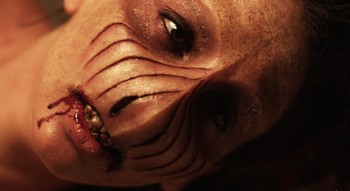 .
.
This month for Numéro Cinq at the Movies we’re turning the lights out so that filmmakers Nicholas Humphries (Vancouver, BC) and Jared Carney (Fredericton, NB) can have a cross continental conversation about horror. Both filmmakers have written articles for Numero Cinq (Humphries on Dash Shaw’s short “Seraph” and Carney on Denis Villeneuve’s short “Next Floor” and the Spanish horror short “Brutal Relaxation”) and they both direct primarily horror films: Carney is just putting finishing touches on a short-film adaptation of a Stephen King short story and Humphries just premiered his second feature film, Charlotte’s Song, at the Vancouver International Film Festival. Here they get to explore what scares them, the nuances of horror, the struggles of being genre directors, and the future of fear. And they explain to us why crickets and tiny doors might be scarier than you think.
— R. W. Gray
.
Nicholas Humphries: Stephen King was quoted as saying, “We make up horrors to help us cope with the real ones.” Do you think this is true?
Jared Carney: I believe this is true to an extent. I mean, people go to see films of any genre as a form of escapism. We as a society absolutely love immersing ourselves in the problems, or horrors, of other people so we can forget our own. But, that said, to be honest I like being scared. I remember when I was young and watching scary movies with my cousins they always made me sit at the end of the couch near the dark hallway because I could handle it. I feel like when I’m scared I can truly see the world clearly. One thing that I’ve always loved about horror is how it bursts people’s bubbles and reminds us of how ugly and abject the world can be.
NH: What is something that scares you that might surprise your audiences?
JC: Well I think a lot of people would think I’m one of those “I’m not afraid of death” people but to be honest, the thought of dying or the death of my loved ones scares me the most. Mind you I also believe death is a beautiful thing, but the fact that we eventually move on from this life, to complete nothingness does bother me. Death is scary, plain and simple, and although audiences may no longer be scared by horror films, put yourself in the shoes of a horror movie victim and I like to believe it becomes a little more terrifying. That and grasshoppers, I’ve had some bad experiences with those things.
NH: I’m afraid of absolutely everything. But not just things like the dark. I’m talking school buses, cornfields, tiny doors. Especially tiny doors. Like, the kind that lead into crawl spaces. It doesn’t matter where it leads, they make me uncomfortable. I don’t know why. I could never fall asleep in a room with a tiny door in it.
JC: What film scared you the most?
NH: The only movie I can’t watch alone is called Session 9. It was shot at Danvers State Hospital and director Brad Anderson takes full advantage of the unsettling location. The way it also leaves so much to the imagination through a terrifying series of audio tapes just gets under my skin.
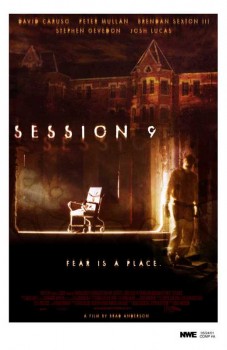
JC: I remember, as a young child, watching Poltergeist in my grandfather’s living room with all the lights turned off. That film really disturbed me to my core, one scene from that film that always sticks out in my memory is the infamous “face ripping” bathroom scene. I was really young then and that was the first and only time I’ve scene the film. I purposely avoid re-watching it as to preserve that memory of my grandfather and I.
NH: What film has inspired you most as a director?
JC: I had always had an interest in creating my own films but looking back I’d have to say House of 1000 Corpses by Rob Zombie. After seeing that film for the my first time I had a real weird feeling in my stomach and after watching its behind-the scenes documentary “30 Days of Hell,” that’s when I decided I wanted to make other people have that same feeling.
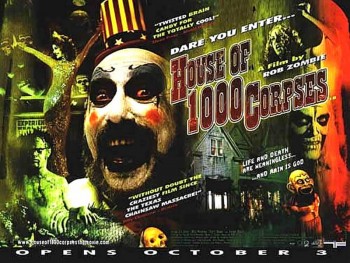
NH: For me it’s The Shining. But this can also depend on the project I’m working on. My latest feature was a period / dark fantasy and so I turned to Pan’s Labyrinth a lot for inspiration.
JC: What do you think in your own work is the scariest thing you have filmed?
NH: I directed a Steampunk-inspired, sci-fi series in 2009 called Riese: Kingdom Falling. In the episodes I directed, the titular character encounters an abandoned village full of evil children. Some people don’t find kids scary. I think most of them are mean and unpredictable.
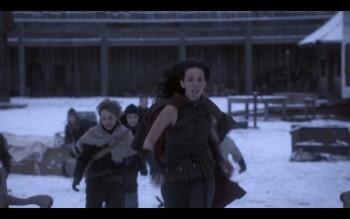
JC: I feel like I do understand fear, to a certain extent at least, and I’m good at scaring other people but as far as scaring myself with my own films, I can’t say that I’ve done that. But with that said, in my the newest film “The Man Who Loved Flowers” I explore themes different than what I’ve dealt with before and I consider it in-part a horror film, but for a completely different reason then expected. It deals with the dark nature of love and heartbreak.
NH: I think any effective film deals with basic human condition stuff. Relationships can take over any of our lives. They can make us better or they can drag us down. We’ve all experienced them or crave them, have been saved or destroyed by them. While I will watch anything, the films I get really excited about are the ones that take on horror in content but make an attempt in some way to elevate the genre to art through visuals and a rich subtext. .
JC: I’m a huge fan of splatter horror but I’m also quite drawn to the darker, more transgressive horror films. I also have a great appreciation for the more “subtle” horror films, films that don’t show or tell you much, but leave it up to the imagination of the audience.
NH: Your short film “Dark and Stormy Night” is a particular flavour of horror-comedy. Did you pull inspiration other directors when making it?
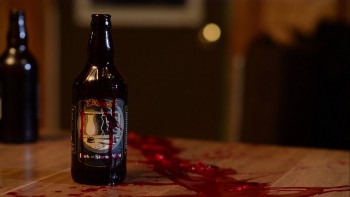
JC: Eli Craig and his film “Tucker & Dale vs. Evil” was a major inspiration for “Dark and Stormy Night”. I found its self-awareness of the horror genre and its ability to flip expectations very refreshing. There is also the involvement of beer which carried over into “Dark and Stormy Night.” [Dark and Stormy is a type of beer from Picaroon’s, a New Brunswick brewery].
JC: In your short film “The Little Mermaid” you take a beloved childhood story and return it to it’s original sinister form. What attracted you to this story?
NH: “The Little Mermaid” was always my favourite fairy tale [The feature film Humphries just premiered at Vancouver International Film Festival, Charlotte’s Song, is also developed from that core fairy tale]. But I think the queer subtext is what attracted me most to it as something to adapt. Growing up different and forbidden, unrequited love, these are all themes I grew up dealing with. Filmmaking is therapy.
NH: Your short film “Waiting” employs split screen and elements of magic realism. Would you consider this film avant garde in its formalism? Why did you feel it had to be told this way?
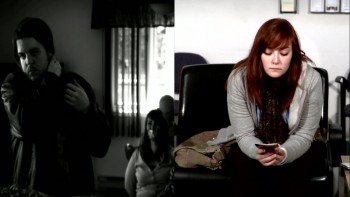
JC: Yes, I would definitely consider “Waiting” to be avant-garde. I was studying film at the University of New Brunswick at the time and as I was writing the script I was very interested in learning how editing could be used to represent the themes of films and how it could convey certain feelings or emotions, so the split screen idea was born out of that.
NH: In your short film “Oasis,” the location is like a character in the film. How did you go about finding it or did the location inspire the film?
JC: In this particular case, the location completely inspired the film. I had stumbled upon the location, a campground that’s been abandoned for over thirty years, during a photography outing one day. When I had the opportunity to make the film months later, we did! It was such a beautifully sublime location that just screamed danger and I simply couldn’t leave it be.
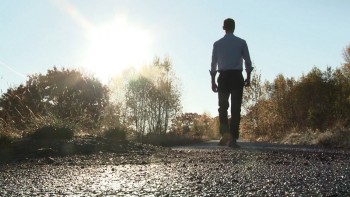
NH: You’re in the process of adapting a short story by Stephen King. What made you decide to adapt it and how did you go about securing the rights?
JC: Stephen King has actually had this program, called “Dollar Babies”, available for many years now in which he grants selected film students the rights to adapt his stories. I was no longer a student at the time but I decided to request the rights to his early short story “The Man Who Loved Flowers” as it appealed to me for several personal reasons at the time, and was lucky enough to be granted it! What attracted me to the story initially was how short but how much impact it had on me, and I also felt like it was something I could really make my own while at the same time staying true to the original narrative. As I began adapting it into my script I began to like it even more as its content and themes kind of coincided with some stuff that I was going through personally. At the core, “The Man Who Loved Flowers” is a love story and it takes us all to a dark place that we’ve been to before, a place we can all relate to. Most of us however, are lucky enough to survive that dark place while others are consumed by it.
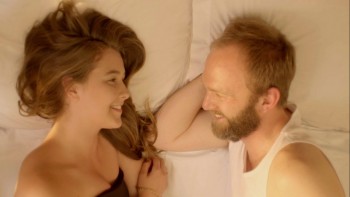
JC: Do you think there is a negative stigma that is carried with the term “horror”?
NH: I cannot count the number of times I’ve endured judgment when I tell people I love horror movies. There is absolutely a stigma. But at the same time, it’s probably the most reliably lucrative genre there is. Always has been. So film snobs can sneer all they want. What would you say is your biggest challenge is as a genre director?
JC: I think getting noticed by people outside of that specific community is the biggest challenge for most genre directors. Horror in particular carries a sort of stigma with it that it’s just senseless violence and gore. But on the contrary, I believe that horror films can be just as innovative and complicated as any other film out there. Although horror-specific festivals and screenings are a lot of fun, perhaps organizers, and crowds in general, need to open up a bit and look past all the scary or disturbing stuff. If we can get beyond that, then there’s no reason why a horror film can’t win an Academy Award some day.
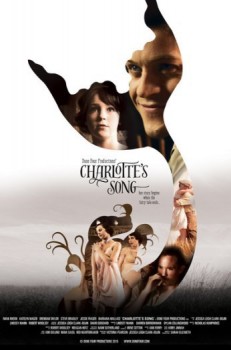
JC: I think a “horror” film is not the same thing as a “scary” film. What’s it going to take for horror films to start scaring people again?
NH: The best scary movies follow you home. And so they need to tap into primal fears but also everyday situations. Most of us don’t worry about zombies in our daily lives. We do feel nervous in open water, a dark parking garage, in the shower. As our routines change, horror filmmakers will need to keep an eye on in which situations we feel the most vulnerable.
JC: What do you think is next for the horror genre? We’ve seen it evolve technologically with the birth of the found footage genre (The Blair With Project, Paranormal Activity, etc.), we’ve seen it become self-aware and pay homage to itself (Scream, A Cabin In The Woods), and we’ve seen it take a dark/trangressive turn with the likes of The Human Centipede and A Serbian Film. So what’s next?
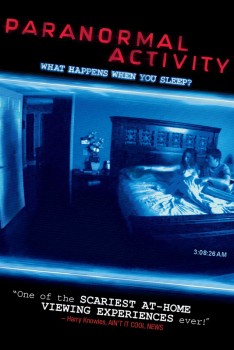
NH: Themes are cyclical but the way we consume them will continue to evolve. It seems like most of the content being developed for VR right now is horror-centric (film and gaming) or pornography. The future is now and it’s terrifying.
—Jared Carney & Nicholas Humphries
 Jared Carney is a writer, director, producer, and production designer with Creeker Films from Fredericton, New Brunswick, and is a graduate of Film Production from the University of New Brunswick. He is a Features Writer for Horror-Movies.ca and just recently wrapped his 9th film, a Stephen King adaptation entitled “The Man Who Loved Flowers”. The horror genre in particular has always piqued his interest and many of his influences stem from both classic and new-age horror cinema.
Jared Carney is a writer, director, producer, and production designer with Creeker Films from Fredericton, New Brunswick, and is a graduate of Film Production from the University of New Brunswick. He is a Features Writer for Horror-Movies.ca and just recently wrapped his 9th film, a Stephen King adaptation entitled “The Man Who Loved Flowers”. The horror genre in particular has always piqued his interest and many of his influences stem from both classic and new-age horror cinema.
 Nicholas Humphries is an award-winning director from Vancouver, Canada. His accolades include Best Short at the Screamfest and British Horror Film Festivals, Audience Choice at the NSI Film Exchange, a Tabloid Witch, an Aloha Accolade and a Golden Sheaf. His films have been nominated for multiple Leo Awards, have screened at Grauman’s Chinese and Egyptian Theaters, on CBC, Fearnet, SPACE Channel and in festivals around the world. He is also a director on the acclaimed Syfy digital series, Riese: Kingdom Falling, which was nominated for four Streamy Awards, three IAWTV Awards and a Leo Award. Riese was also an Official Honoree at the 2011 Webby Awards. His feature film credits include Death Do Us Part and Charlotte’s Song (2015). He teaches Directing at Vancouver Film School.
Nicholas Humphries is an award-winning director from Vancouver, Canada. His accolades include Best Short at the Screamfest and British Horror Film Festivals, Audience Choice at the NSI Film Exchange, a Tabloid Witch, an Aloha Accolade and a Golden Sheaf. His films have been nominated for multiple Leo Awards, have screened at Grauman’s Chinese and Egyptian Theaters, on CBC, Fearnet, SPACE Channel and in festivals around the world. He is also a director on the acclaimed Syfy digital series, Riese: Kingdom Falling, which was nominated for four Streamy Awards, three IAWTV Awards and a Leo Award. Riese was also an Official Honoree at the 2011 Webby Awards. His feature film credits include Death Do Us Part and Charlotte’s Song (2015). He teaches Directing at Vancouver Film School.
.
.
As usual, simply wonderful analysis. Thanks for a suitably creepy selection this week; our bar-filled neighborhood seems to have boycotted Halloween decorations to keep away the pub-crawlers so this was just the ticket to get into the mood. A Saturday Halloween in downtown Washington DC is the Perfect Storm for rowdy behavior.
Now, off to buy nautical odds and ends to play the “Ipswich Fisherwoman” when the children come in to the office to trick-or-treat. We determined the “Ipswich Fisherman,” with his bushy gray beard, was just too intense for the under-4-year-olds who will be heavily represented among the guests.
Spooky Cheers To You,
Maureen Murphy
Washington, DC
P.S. Anyone who pooh-poohs a high-quality work of art just because it happens to qualify under someone’s definition of “genre” is a Crawly Creature of narrow mind and sour disposition!